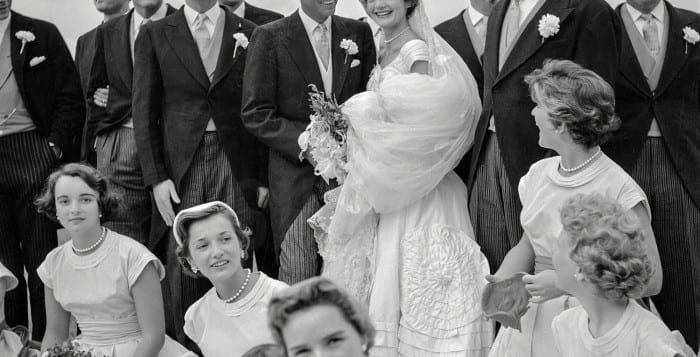By Julianne Cuba

Each morning before caring for her 12 children, Long Island native Erin Henderson sets out for her daily run, which can cover anywhere from 10 to 20-plus miles. These days, part of Henderson’s training includes preparing for Suffolk County’s inaugural marathon on Sept. 13, 2015.
“Every marathon means a lot to me because they all represent weeks and months of hard training, commitment and dedication,” she said. “Getting to race through my home town and having friends and family there will make it that much more special.”
Henderson, who grew up in Selden, moved to Afton, Wyoming, with her husband, Josh, and their three biological sons in 2000.
Two years after settling in Afton, the Henderson clan began growing. Since 2002, Henderson and her husband have adopted nine children — five girls and four boys. Three of the kids were “older child adoptions” and five were “special needs adoptions.”
Today, the Hendersons’ perfect dozen includes Mercades, 19; Nathan, 18; Ryan, 17; Destinee, 17; Shane, 15; Benjamin, 14; Maggie, 13; Amanda, 13; Marcus, 11; Belane, 11; Solomon, 9; and Noah, 6.
A horseback riding accident left Henderson unable to have any more kids. But with three boys the couple decided to adopt because they wanted a girl.

“Our motivation was all pretty much what we wanted, and then when we got over [to Vietnam] we saw so many kids who didn’t have families, and it kind of flip-flopped,” she said. “And it’s cliché to say it’s life changing, but it just was, to see all these kids without parents. We never set out to have 12 kids; it was all one at a time. We just saw a kid that was waiting and they were meant to be with us.”
The Hendersons’ youngest child, Noah, is from Ethiopia and has cerebral palsy. When Noah first joined the family at nine months old, the Hendersons were told he would never sit up on his own.
“He’s a miracle … now he climbs, and goes to school and doing really well,” she said. “He gets into everything. He knows some words and he does some science.”
When she’s not spending time with family, Henderson is either training for marathons herself or training others as a Road Runners Club of America certified running coach and a USA Track & Field certified coach.

Henderson, who just turned 38, said she went for her first run in April of 2009 after realizing she needed to start taking care of her own body. It started with a Wii Fit the family received as a Christmas gift from her husband’s sister in December 2008, she said.
“I knew I was overweight at that point,” she said. “The first time you use it, it makes a cartoon character of you, and it inflates or deflates your character. It literally like blew up; it said I was obese. For some reason, just seeing that on screen, I thought, ‘OK enough. It’s time to do something about it.’”
Henderson said she used the Wii Fit for about four months before heading outdoors to run. Just about a year and a half after that, Henderson ran her first marathon in December 2010. She has now completed 17 marathons, including ones in Boston, New York City, Las Vegas, Walt Disney World and Hartford. And she’s certainly not done yet.
Henderson’s running coach, Ray Nelson, is from Cranston, Rhode Island. He’s been coaching Henderson for just over a year now, and the two communicate mainly via phone and email and sometimes in person before races if their schedules allow it.
“She is an extremely hard worker, very diligent in her training and willing to make sacrifices to try to get in her best shape possible but at the same time without shortchanging any of her family. She definitely has her hands full,” Nelson said.

Henderson’s husband, a graphic designer and Wyoming native, said supporting each other enriches their relationship, and he can’t imagine his life now without his family.
“Most people don’t set out to do what they think is impossible,” he said. “My wife is different — she dives right in. She goes in and gets it.”
He also added that he was always a football player growing up, never a runner, but through supporting and running with his wife he was able to run the NYC marathon last year.
“I wouldn’t have ran that marathon had it not been for my wife running,” he said. “I would never have said to myself, ‘you know what? I think I’ll train for a marathon.’”
Henderson said a few of her accomplishments include winning a half marathon, qualifying for the Boston Marathon and taking third overall in the Tallahassee Marathon.
But Henderson’s greatest accomplishments in life all involve her family, she said.
To follow Erin’s journey, visit her blog at www.seemomrunfar.blogspot.com. To find out more about the Suffolk County Marathon visit www.suffolkmarathon.com.






















